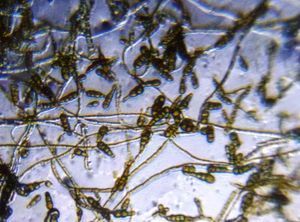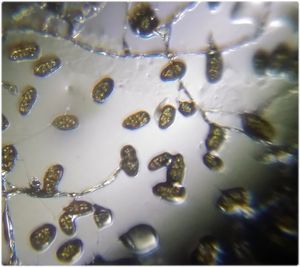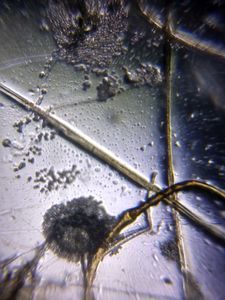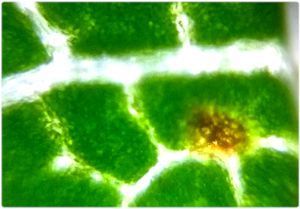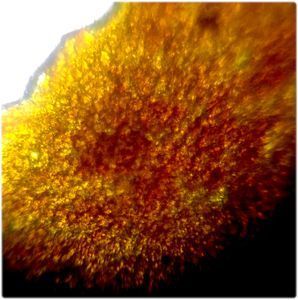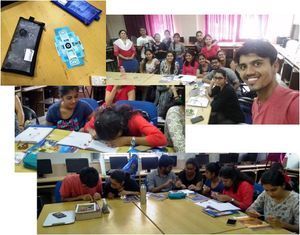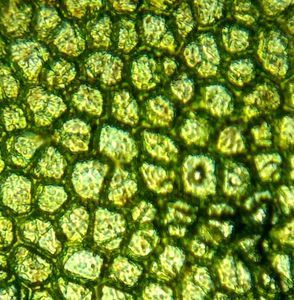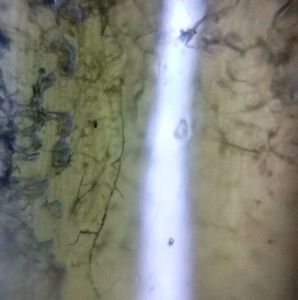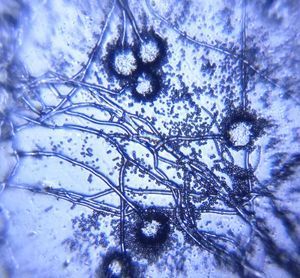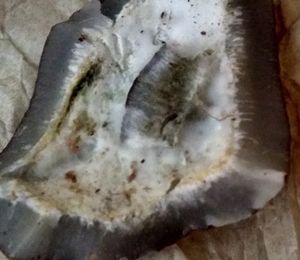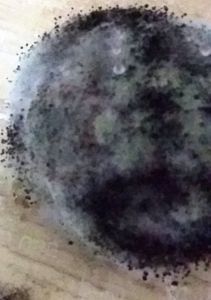Diseased Okra under Foldscope
 Sep 22, 2018 • 10:30 AM UTC
Sep 22, 2018 • 10:30 AM UTC Unknown Location
Unknown Location 140x Magnification
140x Magnification Microorganisms
Microorganisms
gayatri
Learn about the author...
16posts
5comments
1locations
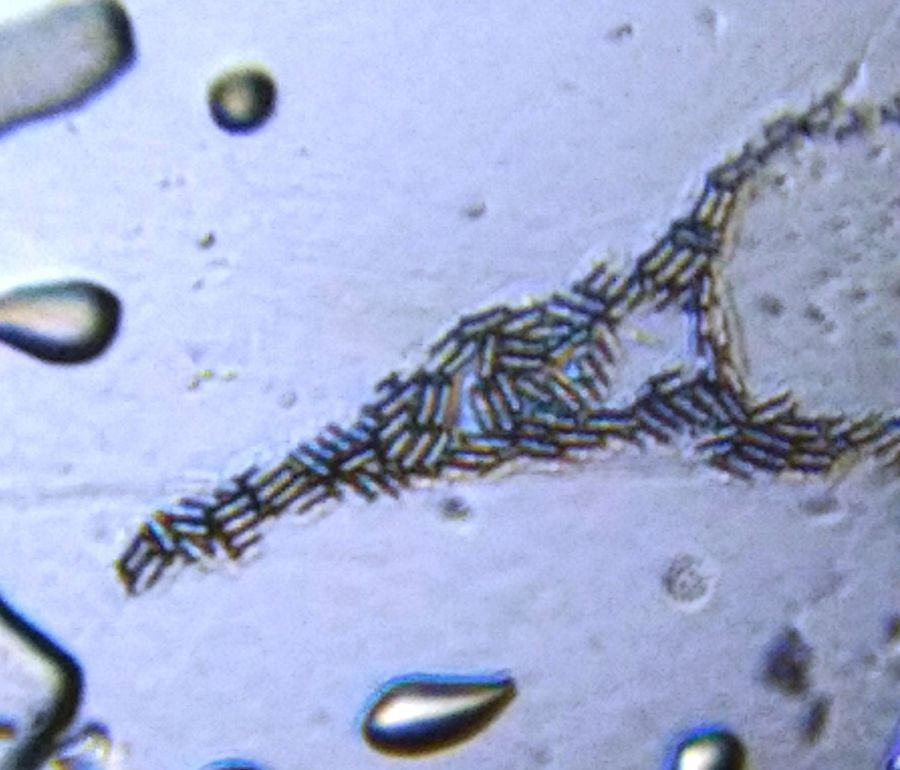
The Government of Maharashtra established the Konkan Krishi Vidyapeeth, Dapoli, Maharashtra on the 18th May 1972 to impart education, conduct research on location specific problems and disseminate the improved crop production technologies amongst the farming community.
We obtained diseased Okra samples from Konkan Krishi Vidyapeeth, Dapoli from Dr. Mahendra Bhairamkar (Extension training officer, Dept. of extension education, College of Agriculture, Dapoli).
Okra, Abelmoschus esculentus , is herbaceous hairy annual plant of the mallow family (Malvaceae). It is native to the tropics of the Eastern Hemisphere and is widely cultivated or naturalized in the tropics and subtropics of the Western Hemisphere for its edible fruit. Only the tender unripe fruit is eaten and it contains large amount of mucilage (gelatinous substance).
We obtained diseased Okra samples from Konkan Krishi Vidyapeeth, Dapoli from Dr. Mahendra Bhairamkar (Extension training officer, Dept. of extension education, College of Agriculture, Dapoli).
Okra, Abelmoschus esculentus , is herbaceous hairy annual plant of the mallow family (Malvaceae). It is native to the tropics of the Eastern Hemisphere and is widely cultivated or naturalized in the tropics and subtropics of the Western Hemisphere for its edible fruit. Only the tender unripe fruit is eaten and it contains large amount of mucilage (gelatinous substance).
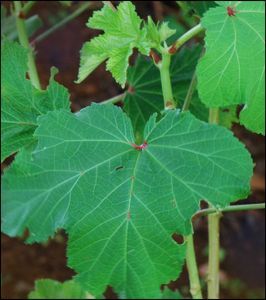
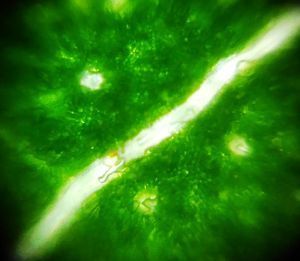
(Healthy leaf under Foldscope)
The diseased leaves of Okra were used for isolation of disease causing microbial flora.
The diseased leaves of Okra were used for isolation of disease causing microbial flora.

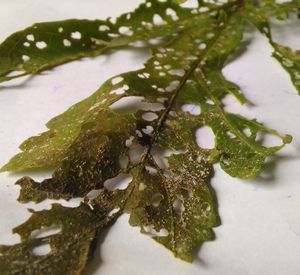
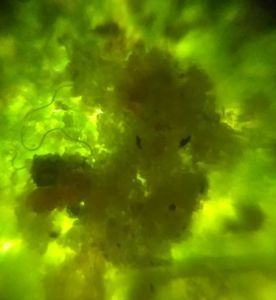
(Diseased leaf observed under Foldscope)
The fungal growth from the diseased leaf was obtained on potato dextrose agar.
The fungal growth from the diseased leaf was obtained on potato dextrose agar.
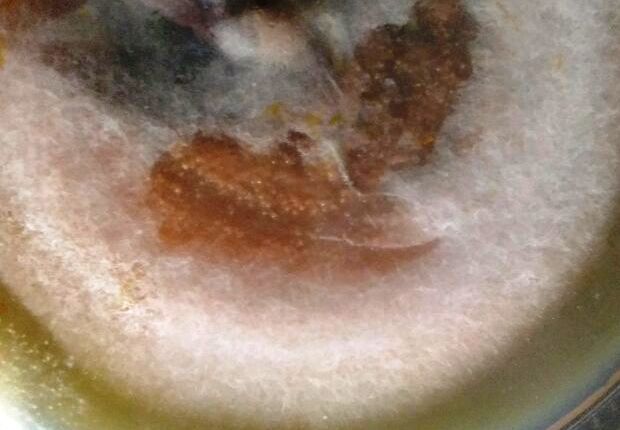
(fungal growth on PDA)
Later, spores were observed and the structure indicated that the disease causing fungus could be Colletotrichum spp.
Later, spores were observed and the structure indicated that the disease causing fungus could be Colletotrichum spp.

(Colletotrichum spp. spores under Foldscope)
Species of Colletotrichum produce spores in tiny, sunken, saucer-shaped fruiting bodies known as acervuli. Symptoms include sunken spots or lesions (blight) of various colours in leaves, stems, fruits, or flowers, and some infections form cankers on twigs and branches.
This post is open to read and review on The Winnower.
Species of Colletotrichum produce spores in tiny, sunken, saucer-shaped fruiting bodies known as acervuli. Symptoms include sunken spots or lesions (blight) of various colours in leaves, stems, fruits, or flowers, and some infections form cankers on twigs and branches.
This post is open to read and review on The Winnower.
Sign in to commentNobody has commented yet... Share your thoughts with the author and start the discussion!

 0 Applause
0 Applause 0 Comments
0 Comments